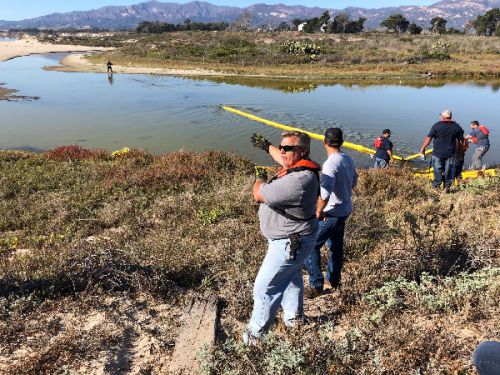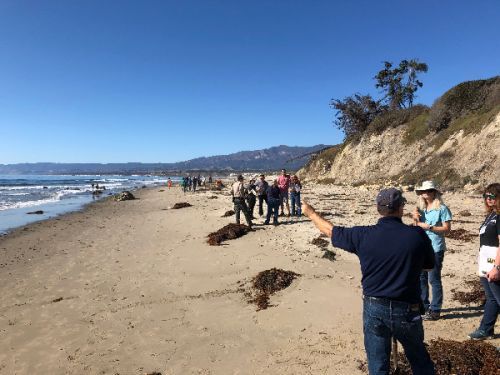Environmental Response to Oil Spills Training in Santa Barbara, California
OCTOBER 28, 2019 — OR&R’s Emergency Response Division assisted California’s Office of Spill Prevention and Response (OSPR) to provide oil spill science training to up-and-coming California spill responders this past week.

The Environmental Response to Oil Spills (EROS) training has been a NOAA/OSPR annual offering for nearly 15 years now; though this is the first time it has been conducted at the Coal Oil Point Nature Reserve. This area is known as one of the most active natural oil seep areas in the world, is home to a variety of sensitive resources and habitats, and was one of many areas impacted by the Refugio Pipeline oil spill in 2015.
This week’s training included students from EPA, U.S. Coast Guard, National Park Service, U.S. Fish and Wildlife Service, the Chumash Tribe, several State agencies, Santa Barbara County Fire, and University of California – Santa Barbara. The class covered a wide variety of both marine and inland subjects such as agency roles, oil composition, weathering, transport, fingerprinting, and effects; sensitive resources, cleanup methods, shoreline assessments (Shoreline Cleanup Assessment Technique or SCAT), environmental trade-offs, cleanup methods & endpoints, Natural Resource Damage Assessment (NRDA), oiled wildlife capture and care, and waste management. In addition, field exercises included boom deployment demonstrations, SCAT activities, and identification of sensitive wildlife and habitats.
For additional information, please contact Jordan Stout.
 An official website of the United States government.
An official website of the United States government.

